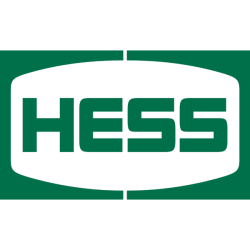Overall, Hess Corporation demonstrates a strong business quality with competitive advantages in key markets and a commitment to sustainability. Its future prospects are bolstered by significant growth opportunities in Guyana and a proactive exploration strategy. However, market challenges related to oil price volatility and investment requirements could pose risks moving forward.
Analysis Date: July 26, 2023
Last Updated: March 12, 2025
Trailing Twelve Months (TTM) values provide a view of the company's performance over the last year.
Graham Value Metrics
Benjamin Graham's value investing approach focuses on finding stocks with a significant margin of safety between their intrinsic value and market price.
Intrinsic Value
Estimated fair value based on Graham's formula
$346.18
Current Market Price: $133.71
IV/P Ratio: 2.59x (>1.0 indicates undervalued)
Margin of Safety
Gap between intrinsic value and market price
61.0%
Graham recommended a minimum of 20-30% margin of safety
Higher values indicate a greater potential discount to fair value
ROE: 26.0
ROA: 2.0413543745998264
Gross Profit Margin: 63.02265825741649
Net Profit Margin: 21.560383088063535
Trailing Twelve Months (TTM) values provide a view of the company's performance over the last year.
Strong Return on Equity
A return on equity of 26% indicates effective management and strong profitability relative to shareholders' equity.
Impressive Operating Profit Margin
42.68
Operating Profit Margin
The operating profit margin of 42.68% suggests that the company is efficient in converting revenue into profit, indicating robust operational effectiveness.
Moderate Net Profit Margin
The net profit margin of 21.56% is decent, but there could be room for improvement compared to industry leaders.
About Profitability Metrics
Profitability metrics measure a company's ability to generate earnings relative to its revenue, operating costs, and other relevant metrics. Higher values generally indicate better performance.
Return on Equity (ROE)
Measures how efficiently a company uses its equity to generate profits
26.00%
10%
15%
Higher values indicate better returns for shareholders
TTM (as of 2025-04-16)
Return on Assets (ROA)
Measures how efficiently a company uses its assets to generate profits
2.04%
3%
7%
Higher values indicate better asset utilization
TTM (as of 2025-04-16)
Gross Profit Margin
Percentage of revenue retained after accounting for cost of goods sold
63.02%
20%
40%
Higher values indicate better efficiency in production
TTM (as of 2025-04-16)
Net Profit Margin
Percentage of revenue retained after accounting for all expenses
21.56%
8%
15%
Higher values indicate better overall profitability
TTM (as of 2025-04-16)
Strong Interest Coverage Ratio
13.3
Interest Coverage Ratio
An interest coverage ratio of 13.30 indicates that the company can comfortably meet its interest obligations, reflecting financial stability.
Adequate Current and Quick Ratios
Current and quick ratios above 1 demonstrate that the company can cover its short-term liabilities, indicating solid liquidity.
Moderate Debt Levels
0.83
Debt-to-Equity Ratio
A debt-to-equity ratio of 0.83 indicates that the company has a reasonable level of debt, but it could be a concern if interest rates rise.
Low Cash Ratio
The cash ratio of 0.41 suggests that the company may have limited cash reserves to cover short-term liabilities, warranting caution.
About Financial Health Metrics
Financial health metrics assess a company's ability to meet its financial obligations and its overall financial stability.
Debt to Equity Ratio
Total debt divided by total equity
0.77x
1.0x
2.0x
Lower values indicate less financial leverage and risk
Less than 1.0 is conservative, 1.0-2.0 is moderate, >2.0 indicates high risk
Q4 2024
Current Ratio
Current assets divided by current liabilities
1.12x
1.0x
2.0x
Higher values indicate better short-term liquidity
Less than 1.0 is concerning, 1.0-2.0 is adequate, greater than 2.0 is good
Q4 2024


